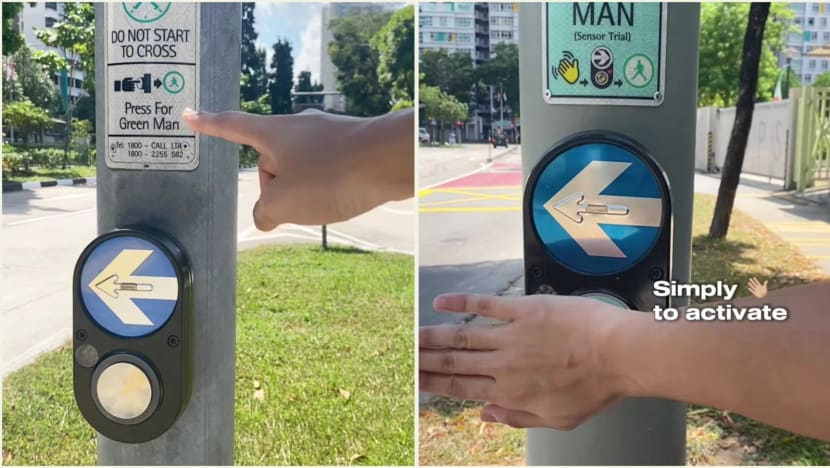LTA to trial microwave-based 'touchless buttons' at 4 pedestrian crossings
Remember to wave for the green man at these locations along Serangoon Road, Fernvale Lane, Bukit Batok Street 31 and Circuit Road.

The Land Transport Authority is trialling the new microwave-based "touchless buttons" at four locations. (Images: Facebook /Land Transport Authority)
SINGAPORE: The Land Transport Authority (LTA) will progressively roll out new "touchless push buttons" at four pedestrian crossings, as part of a trial to assess to use of contactless sensors.
Instead of pushing a button to activate the green man, pedestrians at these crossings will only have to wave. These microwave-based sensors will then activate the green man.
The trial will take place over the next six months, said LTA in a Facebook post on Thursday (Aug 10).
The locations are: Serangoon Road near the Kallang Park Connector, Fernvale Lane near Fernvale Primary School, Bukit Batok Street 31 near Dazhong Primary School and Circuit Road near the hawker centre.
LTA's social media post was accompanied by a 14-second video showing how the sensor works.
LTA previously announced a trial for touchless buttons using infrared sensors in July 2022.
Minimising physical contact at signalised crossings will "reduce wear and tear on our infrastructure", it said at the time.
These sensors were also installed at four locations - Jalan Besar near Syed Alwi Road, Tampines Street 86 near Block 879A, Bukit Batok Street 32 near St Anthony's Primary School and Yishun Street 21 near Block 219.
On Thursday, the authority said it will be “assessing the performance of these two types of sensors before finalising future plans”.
In response to CNA's queries, LTA said there is "no perceptible change" between microwave and infrared sensors beyond the difference in underlying technology.
"A microwave sensor uses frequency for detection while an infrared sensor uses light to detect hand movement to activate the green man," it said.
"This trial using microwave technology for touchless green man activations will allow us to compare the detection accuracy and sensitivity of the two technologies, and their durability in our environmental conditions."















